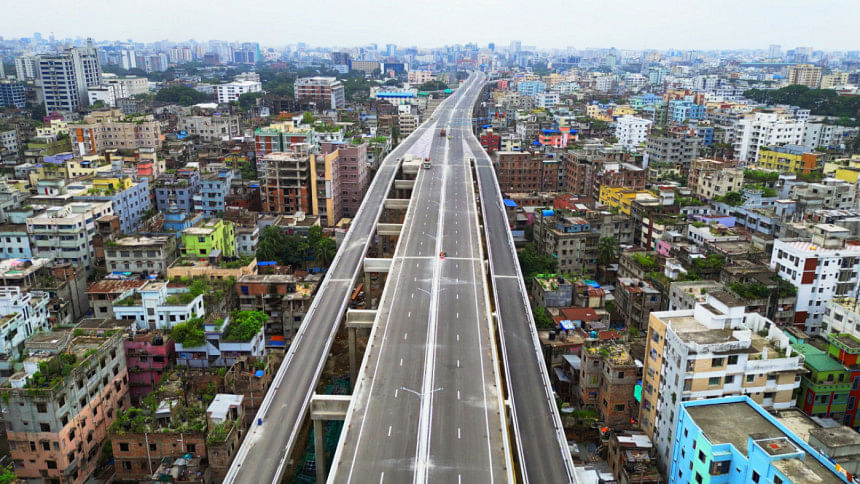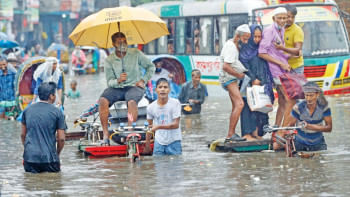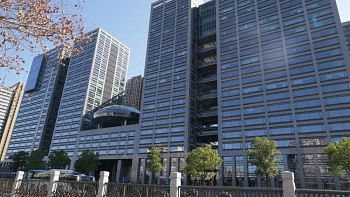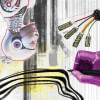What can Bangladesh learn from China’s rise?

How do we harness our demographic dividend, accelerate inclusive growth, and build future-ready systems in a rapidly changing world? This is a question we must ask as Bangladesh enters a new phase of its development journey. A compelling answer, I believe, lies in the story of China, which has transformed itself in just a few decades through strategic investments in education, technology, and infrastructure. My recent visit to the country has left me convinced that Bangladesh has much to learn from this transformation.
China's progress is deeply rooted in its careful investment in education, especially in science, technology, engineering, and mathematics (STEM). From primary schools to postgraduate research institutes, it has embedded innovation, experimentation, and industry relevance into its academic culture.
At a university in Guangzhou, I saw students not just attending lectures but also actively working in state-of-the-art labs, partnering with companies on research, and even launching start-ups right from the campus. It's a model that blends theory with practice—one that Bangladesh must work towards.
Unfortunately, most of our universities still operate in silos. Curricula are outdated, many faculty members lack exposure to global developments, and there's little interaction between academia and industry. Unless we align education with market demands and technological shifts, we risk producing graduates unprepared for the demands of the Fourth Industrial Revolution.
One way forward is to forge stronger ties between Bangladeshi and Chinese institutions. Joint degree programmes, research collaborations, technology transfer, and faculty exchanges should be key to our higher education strategy. Such collaborations can also extend to our skills development centres, especially outside Dhaka, to ensure broader access to quality learning.
Technology and artificial intelligence (AI) have been central to China's transformation. In cities like Guangzhou, Shanghai and Beijing, I saw AI-powered traffic lights adjusting in real time to ease congestion, facial recognition systems streamlining access to metro stations and hotels, and drones delivering goods to people's doorsteps. These were not futuristic concepts; they were everyday tools accessible to ordinary citizens.
True, Bangladesh has made some progress in digitalisation, but much of it remains uneven. Services are often bureaucratic, digital tools remain underutilised, and infrastructure gaps persist. If we want to truly leap ahead, we need to develop our own tech and AI ecosystems. For instance, the ICT Division, in partnership with local universities and Chinese tech firms, among others, could initiate joint ventures to build AI-based traffic control systems, smart city platforms, and customised e-governance solutions. By co-developing technology rather than merely importing it, we not only retain value but also grow local talent and generate employment.
We also need to empower our youth to become innovators, not just users of technology. Through mentorship, innovation hubs, and a Bangladesh-China start-up bridge, our young entrepreneurs could access the capital, guidance, and networks they need to scale their ideas.
As things stand, few aspects of daily life expose the gap between China and Bangladesh as starkly as traffic management. While many Chinese cities use AI-powered systems to regulate traffic, manage public transport, and ensure commuter safety, Dhaka suffers from chaos, broken signals, and inadequate services, causing severe social and economic losses. To address this, we can adopt smart traffic solutions through partnerships with Chinese planners and tech firms. AI-driven traffic systems, digital public transport networks, and low-cost smart cards could transform urban mobility if designed with accessibility in mind. This would benefit everyone, ranging from rickshaw-pullers to students and working-class commuters.
One of the most eye-opening experiences during my visit was observing China's health-tech revolution. Even in relatively remote areas, people accessed healthcare through digital appointment systems, mobile diagnosis apps, and AI-assisted doctors. Rural clinics were equipped with low-cost devices that could detect early signs of disease, connect patients to specialists in urban centres, and maintain digital health records with seamless efficiency. For Bangladesh, where rural health infrastructure is often poor and specialist care is concentrated in a few urban centres, this kind of model could be revolutionary. We don't necessarily need to build mega-hospitals in every upazila. Instead, what we need is a decentralised, tech-enabled healthcare model.
With support from Chinese firms and institutions, we could roll out AI-based diagnostic tools at community clinics, train health workers to use them, and connect clinics to tertiary care centres through telemedicine. Simple devices like portable ECG machines, digital thermometers, and automated prescription systems could make a real difference to people's lives.
China's cities also offer a lesson in urban planning. This is a country where cities are planned around people, sustainability, and efficiency. Parks, public spaces, walkways, and waste management systems are designed to serve communities, not just elites. In the cities, I saw how mixed-use urban zones combined housing, shopping, recreation, and public transport in a compact, eco-friendly design. Smart lighting, waste segregation, green buildings, and efficient energy use are built into the urban fabric.
In contrast, our cities suffer from unplanned growth, unsafe construction, and environmental degradation. To reverse this, we must go beyond short-term real estate incentives and develop a long-term vision for sustainable, inclusive urban spaces.
Through collaboration with Chinese urban development institutes and investment in training our city planners, Bangladesh can adopt and adapt models of green city design. Pilot projects in secondary cities like Khulna, Barishal, or Sylhet, focusing on walkability, water management, and smart utilities, can further emphasise that sustainable urbanisation is possible beyond Dhaka.
Ultimately, what impressed me most in China was not the technology itself, but how it was deployed with a deep understanding of people's needs. Development, after all, is not just about GDP or tall buildings; it's about the quality of everyday life.
For Bangladesh, the takeaway is simple but powerful. We don't need to become another China. We need to become the best version of ourselves—smart, inclusive, green, and future-ready. That transformation cannot come from the government alone. It requires the collective vision and effort of educators, researchers, health workers, technologists, urban planners, and citizens.
Md Abbas is a journalist at The Daily Star. He can be reached at [email protected].
Views expressed in this article are the author's own.
Follow The Daily Star Opinion on Facebook for the latest opinions, commentaries and analyses by experts and professionals. To contribute your article or letter to The Daily Star Opinion, see our guidelines for submission.

 For all latest news, follow The Daily Star's Google News channel.
For all latest news, follow The Daily Star's Google News channel. 







Comments